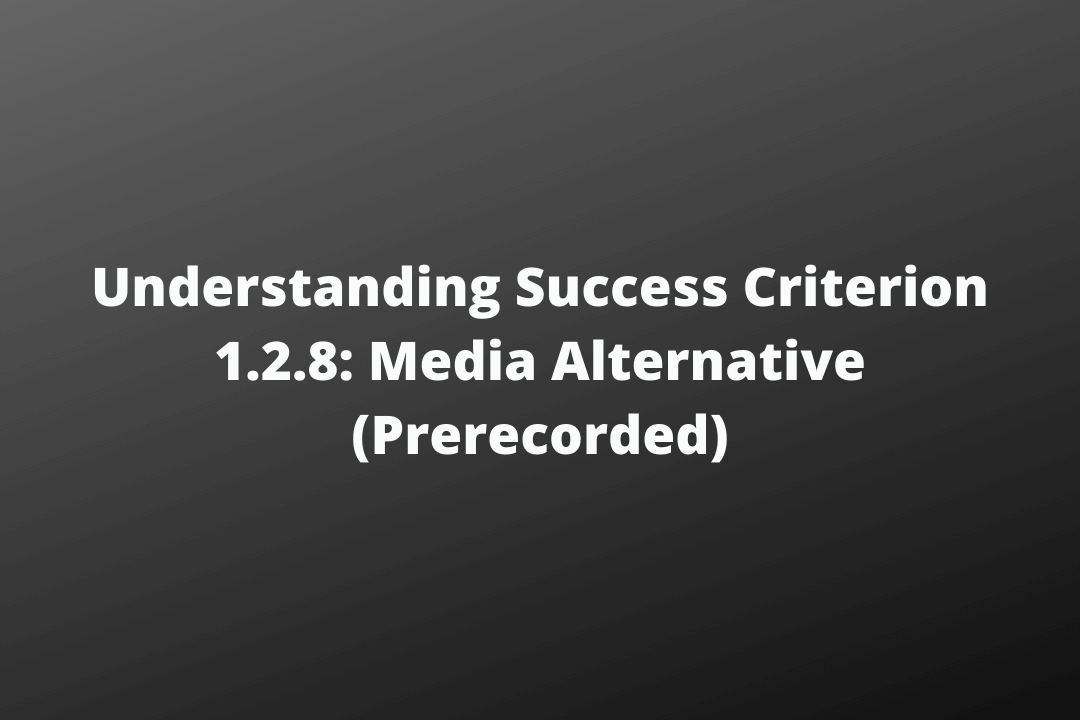Time-based media should be provided with an alternative to make it accessible to individuals whose vision is too poor to reliably read captions and whose hearing is too poor to reliably hear dialogue and audio descriptions.
Table of Contents
Official Requirements
1.2.8 Media Alternative (Prerecorded): An alternative for time-based media is provided for all prerecorded synchronized media and for all prerecorded video-only media. (Level AAA)
Why is it required?
Alternatives for time-based videos help to convey information to people who have hearing and visual impairments as they use Assistive technology such as refreshable braille displays to access the video.
For example: In a training video, the instructor is explaining a new technology using the props or 3D models that are available at their disposal.
In this case, the video requires an alternative that includes
- visual information,
- including visual context,
- actions and expressions of actors,
- and any non-speech sounds (laughter, off-screen voices, etc.)
To ensure the information is communicated to people with visual and hearing impairments.
How do we fix it?
- Provide an extended text description for the video and link it to the video
- Provide hyperlinks or whatever is needed to provide parallel functionality to videos that require interactions from users.
- If it’s a video-only presentation, create a document that includes all of the important information as well as descriptions of scenery, actions, expressions, etc. that are part of the presentation.
Are there any exceptions?
There is no need to provide an alternative to the video if the video is itself an alternative
Mistakes to avoid
- The media alternative provided is linked somewhere else on the page
- The alternative provided is not clearly labeled with the part of the text for which it is a substitute
Reference
Understanding Success Criterion 1.2.8: Media Alternative (Prerecorded)



